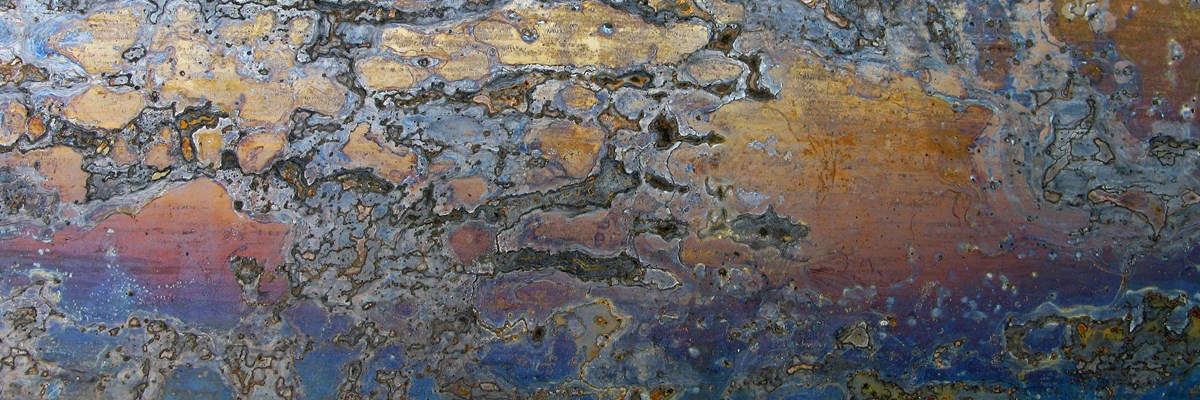What is Corrosion?

NACE/ASTM G193
Corrosion is the deterioration of a material, usually a metal, that results from a chemical or electrochemical reaction with its environment. (1)
ISO 8044
Physicochemical interaction between a metal and its environment that results in changes in the properties of the metal, and which may lead to significant impairment of the function of the metal, the environment or the technical system, of which these form part. (2)
International Union of Pure and Applied Chemistry.
Corrosion is an irreversible interfacial reaction of a material (metal, ceramic, or polymer) with its environment which results in the consumption of the material or in dissolution into the material of a component of the environment.
Often, but not necessarily, corrosion results in effects detrimental to the usage of the material considered. Exclusively physical or mechanical processes such as melting or evaporation, abrasion or mechanical fracture are not included in the term corrosion. (3)
Electrochemical corrosion: Electrochemical corrosion always involves electrode reactions. Typical examples are the corrosion of a metal by the dissolution of metal ions or by the formation of an oxide film.
M. Fontana
Corrosion is the deterioration of a material because of a reaction with its environment. (4)
D.A. Jones
Corrosion is the destructive result of chemical reactions between a metal and the environment. (5)
P.R. Roberge
Corrosion is the destructive attack of a material by reaction with its environment. (6)
E. McCafferty
Corrosion is the destructive attack of a metal by its reaction with the environment. (7)
L.L. Shreir
Transformation definition: the term metallic corrosion embraces all interactions of a metal or alloy (solid or liquid) with its environment, irrespective of whether this is deliberate and beneficial or adventitious and deleterious. This definition includes, for example, the deliberate anodic dissolution of zinc in cathodic protection and electroplating as well as the spontaneous gradual wastage of zinc roofing sheet resulting from atmospheric exposure.
Deterioration definition: corrosion has been defined as the undesirable deterioration of a metal or alloy, i.e. an interaction of the metal with its environment that adversely affects those properties of the metal that are to be preserved. This definition is also applicable to non-metallic materials such as glass, wood, concrete, ceramics, and composites. This definition considers corrosion as a deleterious process only.
The formation of passive oxide films on corrosion resistant alloys conforms with the transformation definition of corrosion, but not with the deterioration definition. In these examples, the rate and extent of the reaction is not significantly detrimental to the metal concerned. (8)
R.M. Latanison
Corrosion is the environmental degradation of materials
References
- NACE International/ ASTM G193-12d, 2012, "Standard Terminology and Acronyms Relating to Corrosion", ASTM International, West Conshohocken, PA, 2012, DOI: 10.1520/G0193-12D.
- ISO 8044:1999, "Corrosion of metals and alloys Ð Basic terms and definitions", International Organization for Standardization, Brussels, 2000.
- K.E. Heuslerl, D. Landolt and S. Trasatti, “Electrochemical corrosion nomenclature”, Pure & Appl. Chem. 61 (1), (1989):p.19-22. DOI: 10.1351/pac198961010019.
- M.G. Fontana, "Corrosion science and engineering", 3rd Edition, Tata McGraw-Hill, ISBN: 978-0070607446, 2005.
- D.A. Jones, "Principles and prevention of corrosion", 2nd Edition, Prentice Hall, ISBN: 978-0133599930, 1995.
- P.R. Roberge, "Handbook of corrosion engineering", 1st Edition, McGraw-Hill, ISBN 0-07-076516-2, 1999 or Kindle Edition.
- E. McCafferty, "Introduction to corrosion science", 1st Edition, Springer, ISBN 978-1-4419-0454-6, e-ISBN 978-1-4419-0455-3, 2010.
- L.L. Shreir, R.A. Jarman, and G.T. Burstein, "Corrosion volume 1: metal and environmental reactions", 3rd Edition, Butterworth-Heinemann, ISBN 0 7506 1077 8, 1994. Kindle Edition.

